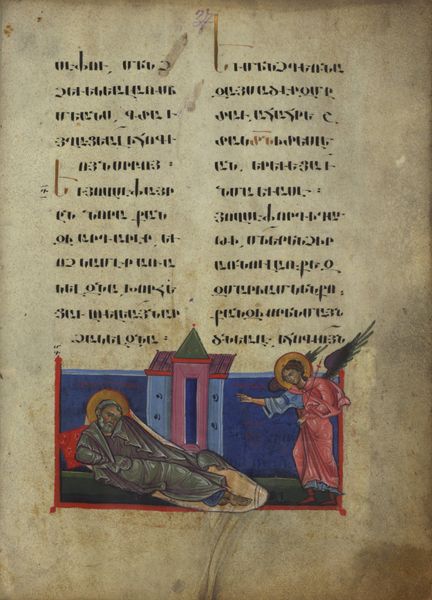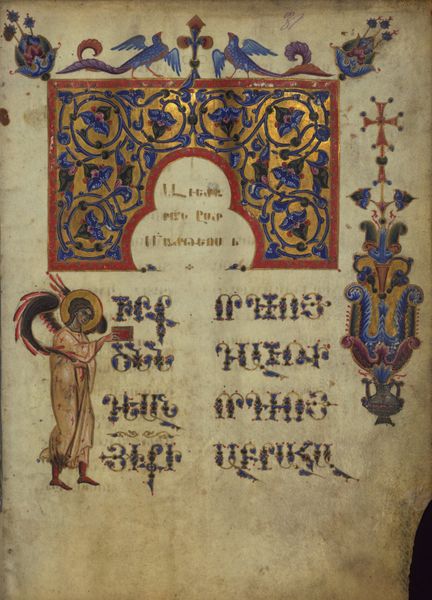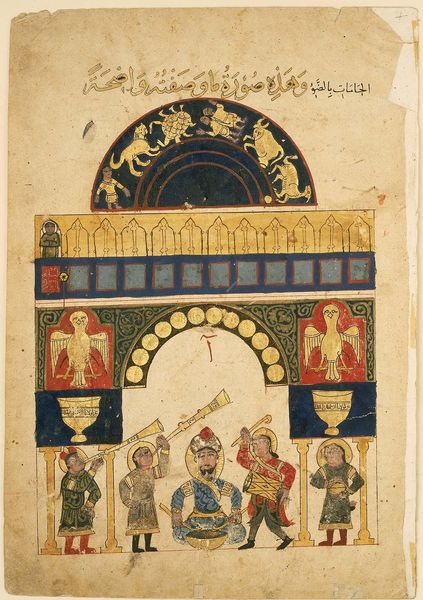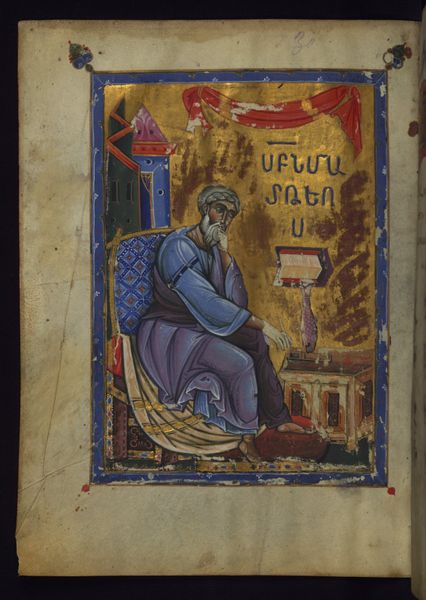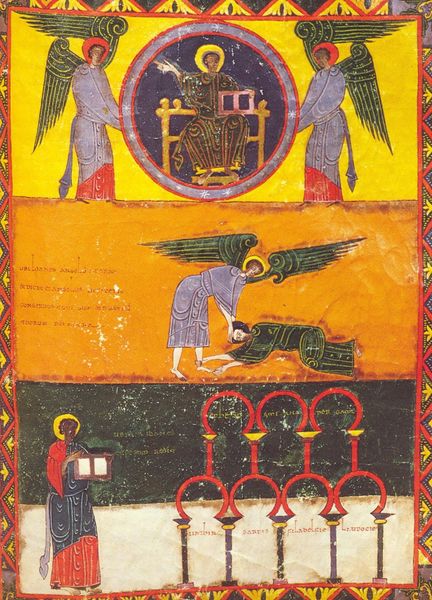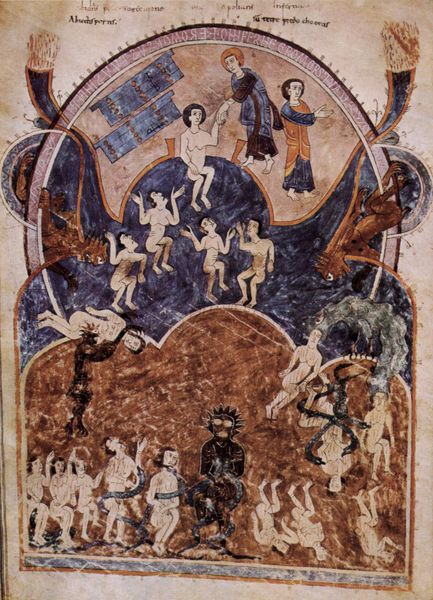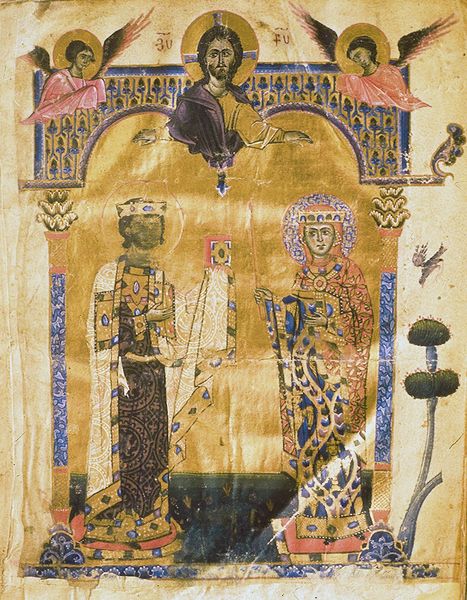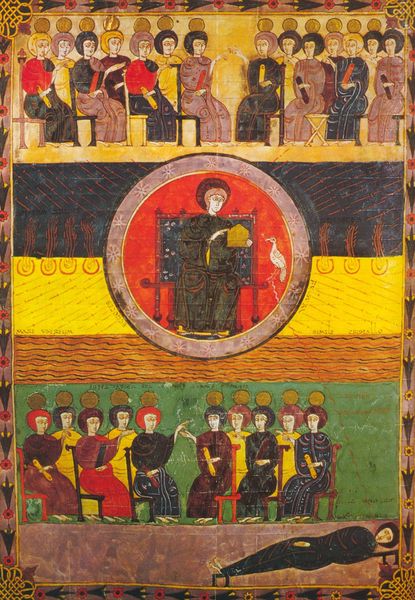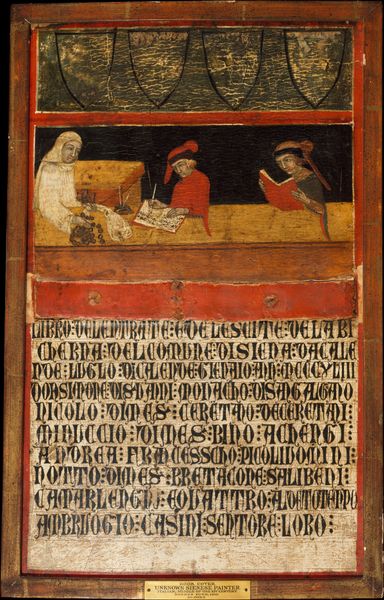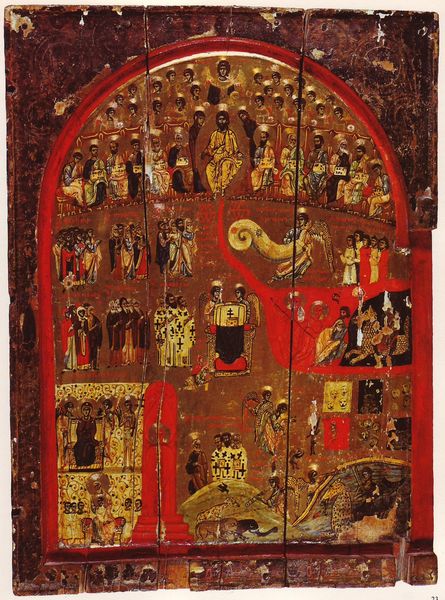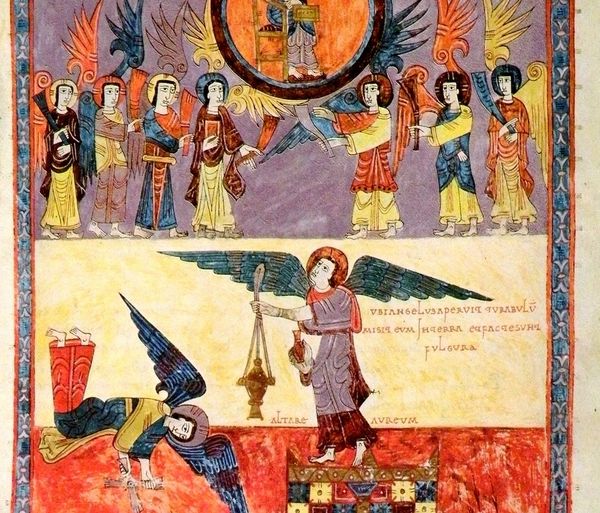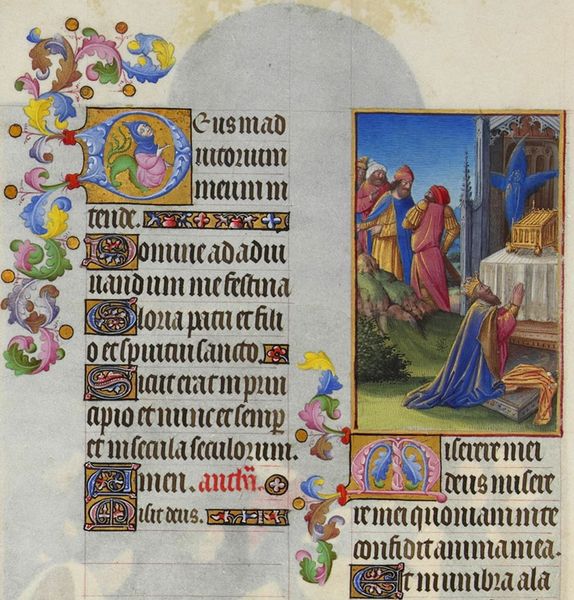
tempera, painting, watercolor
#
byzantine-art
#
medieval
#
narrative-art
#
tempera
#
painting
#
watercolor
#
coloured pencil
#
islamic-art
#
mixed media
#
miniature
Copyright: Public domain
Curator: Here we have "Christ Predicting the Sufferings of the Apostles," a tempera, watercolor, and colored pencil work crafted around 1262 by Toros Roslin. What's your immediate response? Editor: It strikes me as simultaneously gruesome and carefully constructed. There’s an almost unsettling balance in how the violence is rendered. What narrative threads are we seeing at play here? Curator: The composition uses layered spatial planes. Above, Christ appears centrally, surrounded by disciples. Below, these same figures face graphic torments— flaying, hanging upside down. Roslin's formal control contrasts the horrific subject matter. Editor: Indeed. Considering its Byzantine and medieval influences, the miniature compels us to examine power, sacrifice, and resistance through the lens of religious persecution and its ripple effects on identity. The bottom level gives me prison-industrial-complex vibes, especially because the victims don’t seem to be aware of Jesus and the Apostles above them. Curator: Note how Roslin used colour and line to direct our vision; from the gold-leaf background, symbolizing the divine, to the intense reds signaling the martyrs' agony. The strong linear outlines define form, flattening space in a way typical of the era but also heightening the dramatic effect. Editor: Agreed. This flattening also echoes how real suffering is also flattened when we only witness it secondhand; here, it’s aestheticized, formalized. I find myself thinking about the politics of witnessing, how this era often portrayed extreme violence in a specific ideological and propagandistic context. Curator: Exactly! Roslin, though working within conventions, infused intense expressiveness and emotional resonance through precise detail in the figure's faces and gestures, heightening our understanding of theological doctrine. Editor: Precisely. Overall, this highly stylized image can spur rich discussions about art and propaganda, representation of historical atrocities, and its legacy within faith. Curator: Well, through careful formal analysis, we are left with deeper insights. Thank you for your reflections. Editor: Thank you. Looking at it this way gives us a means to consider not only this time in the past, but the way such symbolic events may recur and are remembered throughout human history.
Comments
No comments
Be the first to comment and join the conversation on the ultimate creative platform.
